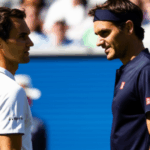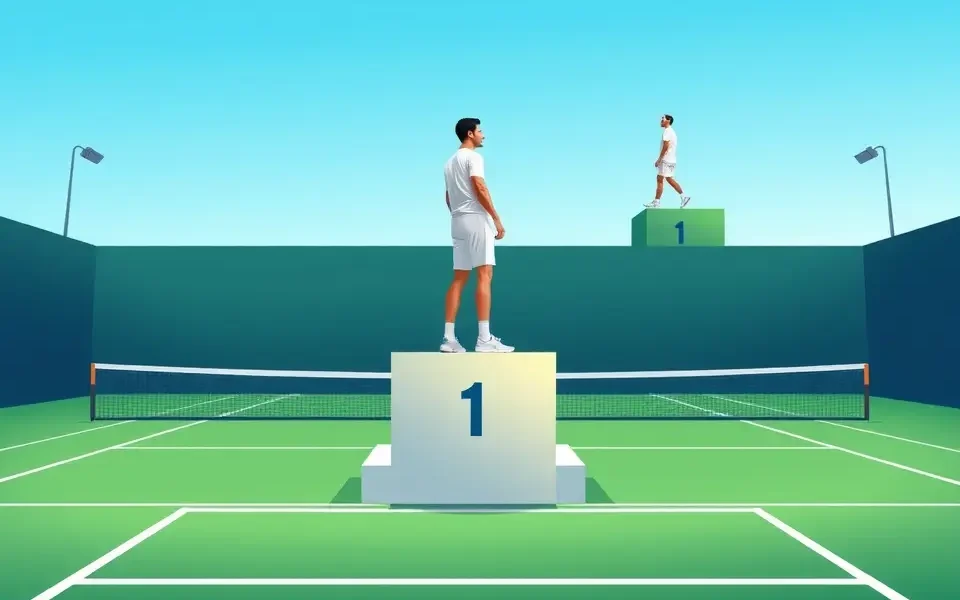Novak Djokovic, the Serbian tennis icon, has once again etched his name in the record books, matching a significant milestone held by his long-time rival, Rafael Nadal. However, a monumental record established by Roger Federer still stands unchallenged, highlighting the Swiss maestro’s enduring legacy in the sport. These three players, often dubbed the “Big Three,” have dominated men’s tennis for over two decades, amassing a combined 66 Grand Slam singles titles.
Djokovic Levels Nadal in Masters 1000 Dominance
Djokovic’s recent victory has allowed him to equal Rafael Nadal’s record in a specific category of Masters 1000 events, showcasing his consistency and versatility across different surfaces and tournaments. The ATP Masters 1000 tournaments are a series of nine prestigious events held annually, just below the Grand Slams in terms of ranking points and prestige. These tournaments attract the top players in the world and are a crucial part of the ATP Tour calendar.
The Breakdown of Djokovic and Nadal’s Masters 1000 Achievements
While the exact record that Djokovic matched is related to overall match wins at Masters 1000 events, it’s important to understand the broader context of their achievements in these tournaments:
- Titles: Djokovic leads with 40 Masters 1000 titles, surpassing Nadal’s 36.
- Finals: Djokovic has also reached more Masters 1000 finals than Nadal.
- Overall Match Wins: Recent updates confirm Djokovic has surpassed Nadal in overall match wins at Masters 1000 events.
Federer’s Unrivaled Reign: The Undisputed Number One
Despite Djokovic’s and Nadal’s remarkable accomplishments, Roger Federer holds a record that remains untouched: his 237 consecutive weeks as the world’s number one ranked player. This incredible feat, achieved between 2004 and 2008, showcases Federer’s sustained dominance at the peak of his career.
Why Federer’s Record is So Difficult to Break
Several factors contribute to the difficulty of surpassing Federer’s record:
- Consistency: Maintaining peak performance for such an extended period requires exceptional physical and mental resilience.
- Competition: Federer faced fierce competition from Nadal, Djokovic, and other top players during his reign.
- Adaptability: Remaining at the top demands constant adaptation to evolving playing styles and strategies.
The Big Three: A Statistical Overview
To fully appreciate the magnitude of these players’ achievements, let’s examine some key statistics:
- Grand Slam Titles: Djokovic leads with 24, followed by Nadal with 22, and Federer with 20.
- Weeks at Number One: Djokovic holds the record with 428 weeks, followed by Federer with 310, and Nadal with 209.
- Year-End Number One: Djokovic has finished the year as the top-ranked player a record eight times, while Federer and Nadal have each achieved this feat five times.
- Big Titles Won: Djokovic also leads in terms of “big titles” which include Grand Slams, ATP Finals, Masters 1000 events and Olympic Gold medals, with 72 titles, Nadal has 59, and Federer won 54.
The Enduring Legacy of the Big Three
The Big Three’s era has been marked by intense rivalries, breathtaking performances, and a constant push for greatness. Their dominance has not only elevated the sport of tennis but has also inspired millions of fans worldwide. While records are meant to be broken, some achievements, like Federer’s 237 consecutive weeks at number one, stand as a testament to unparalleled consistency and excellence. As the next generation of players emerges, the legacy of Djokovic, Nadal, and Federer will continue to shape the landscape of men’s tennis for years to come.








No Comment! Be the first one.